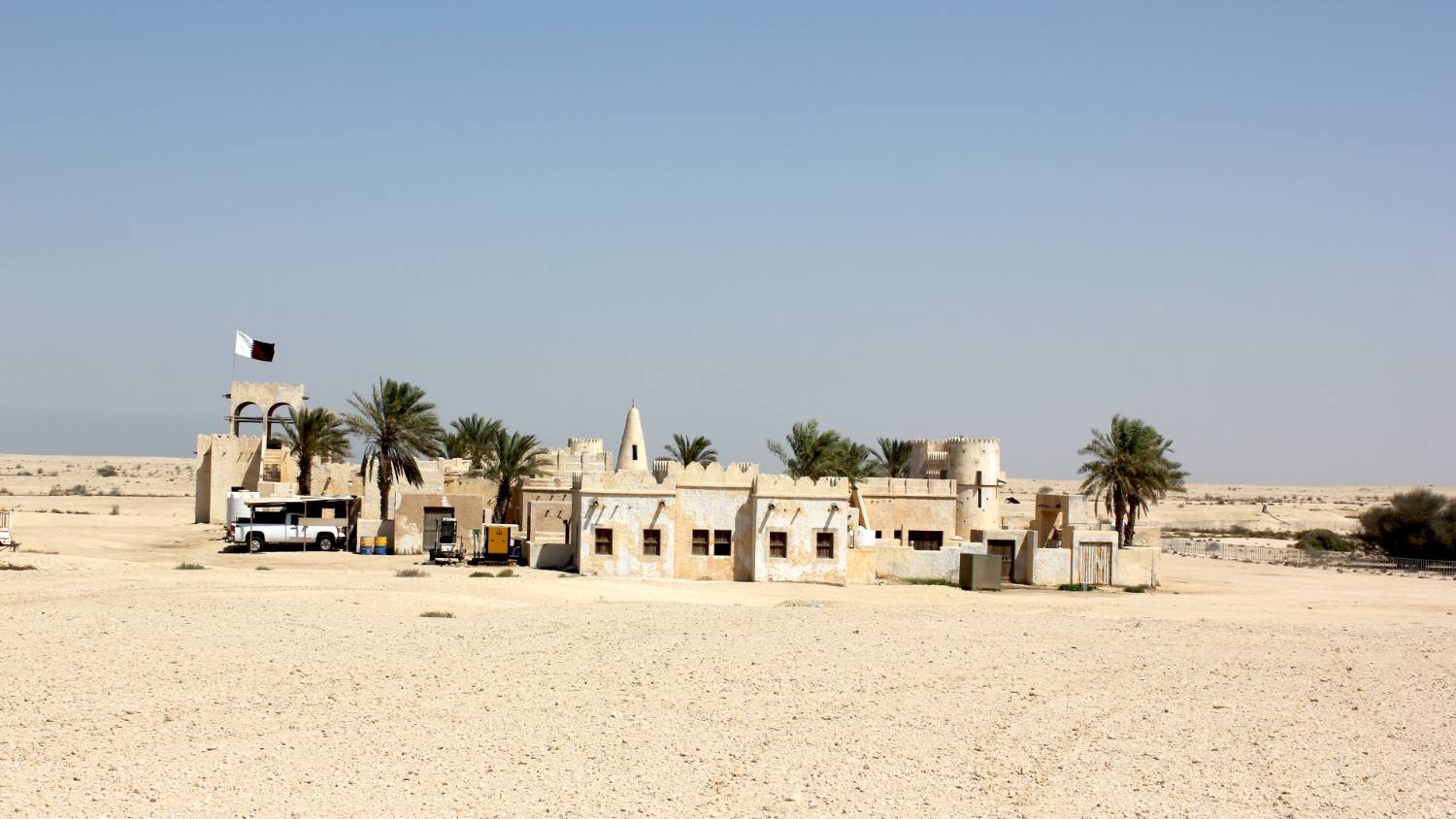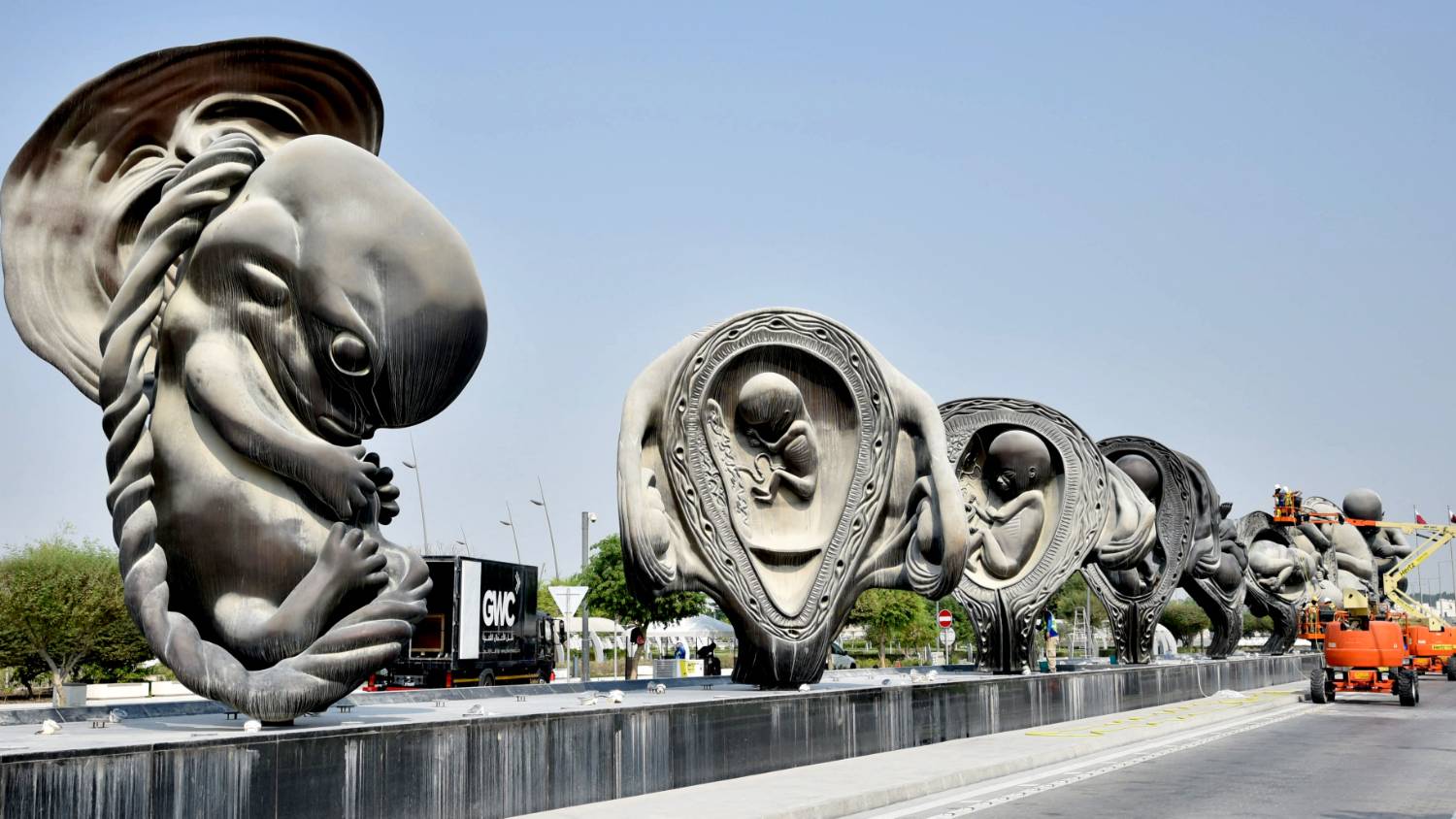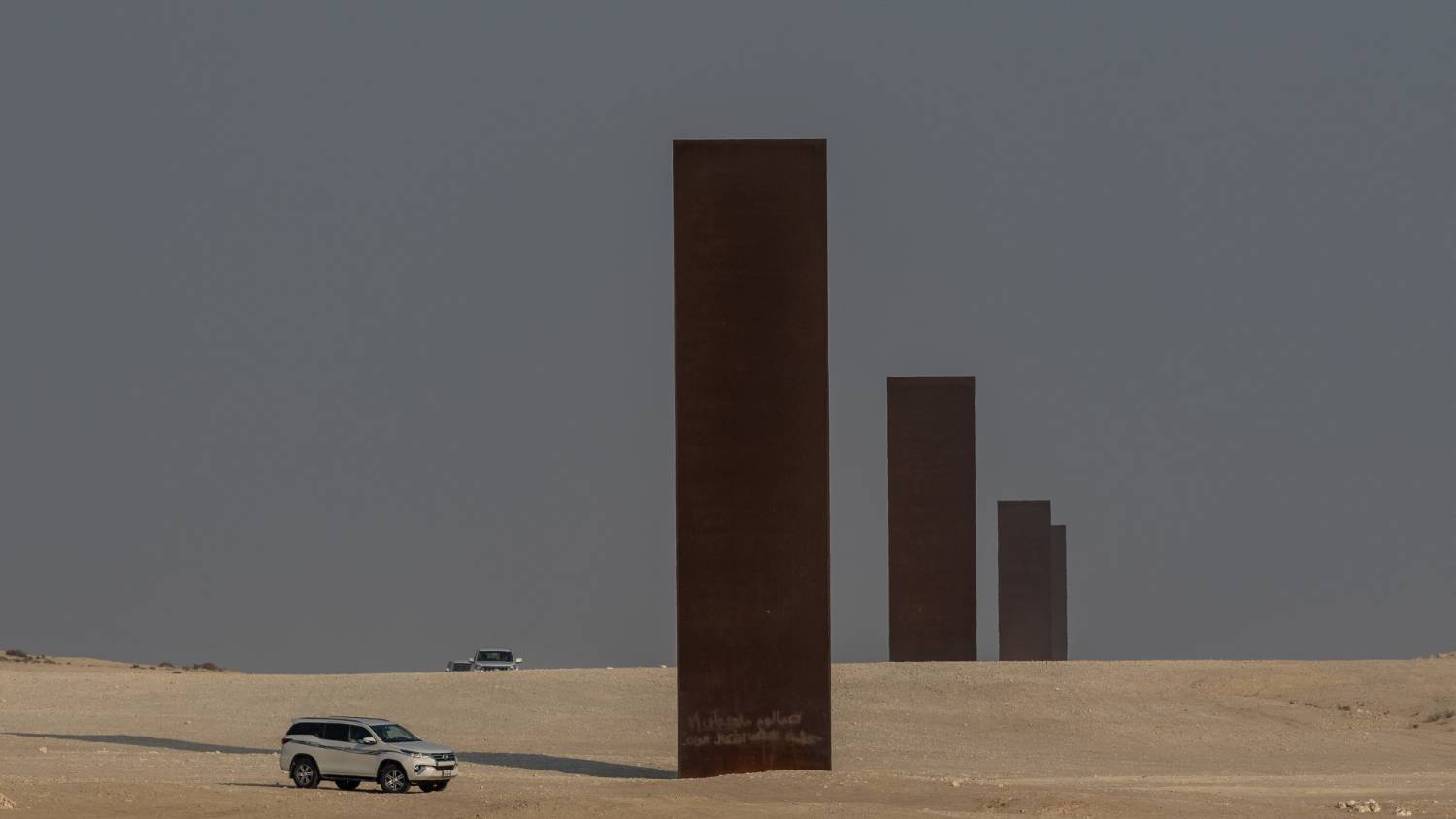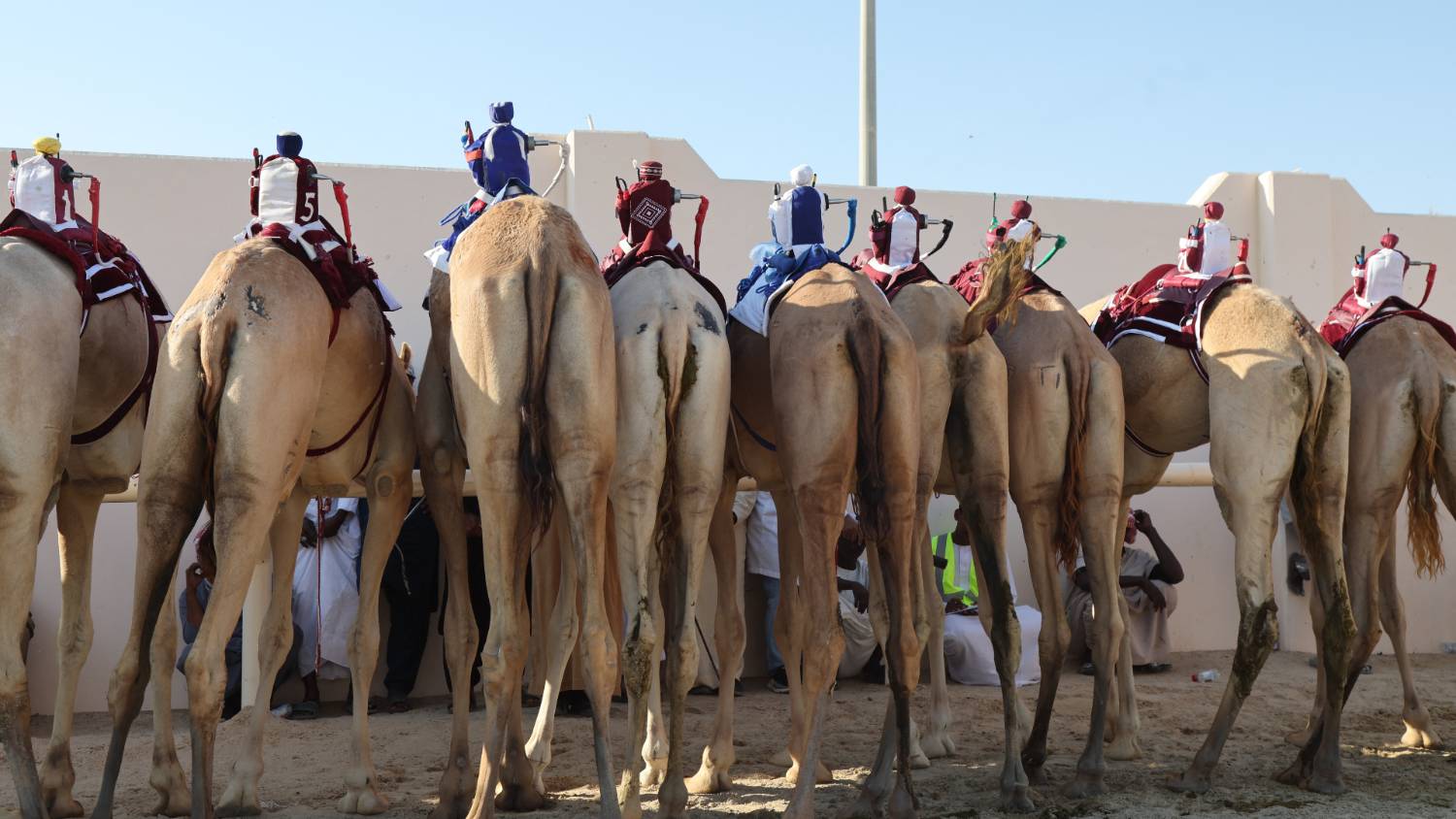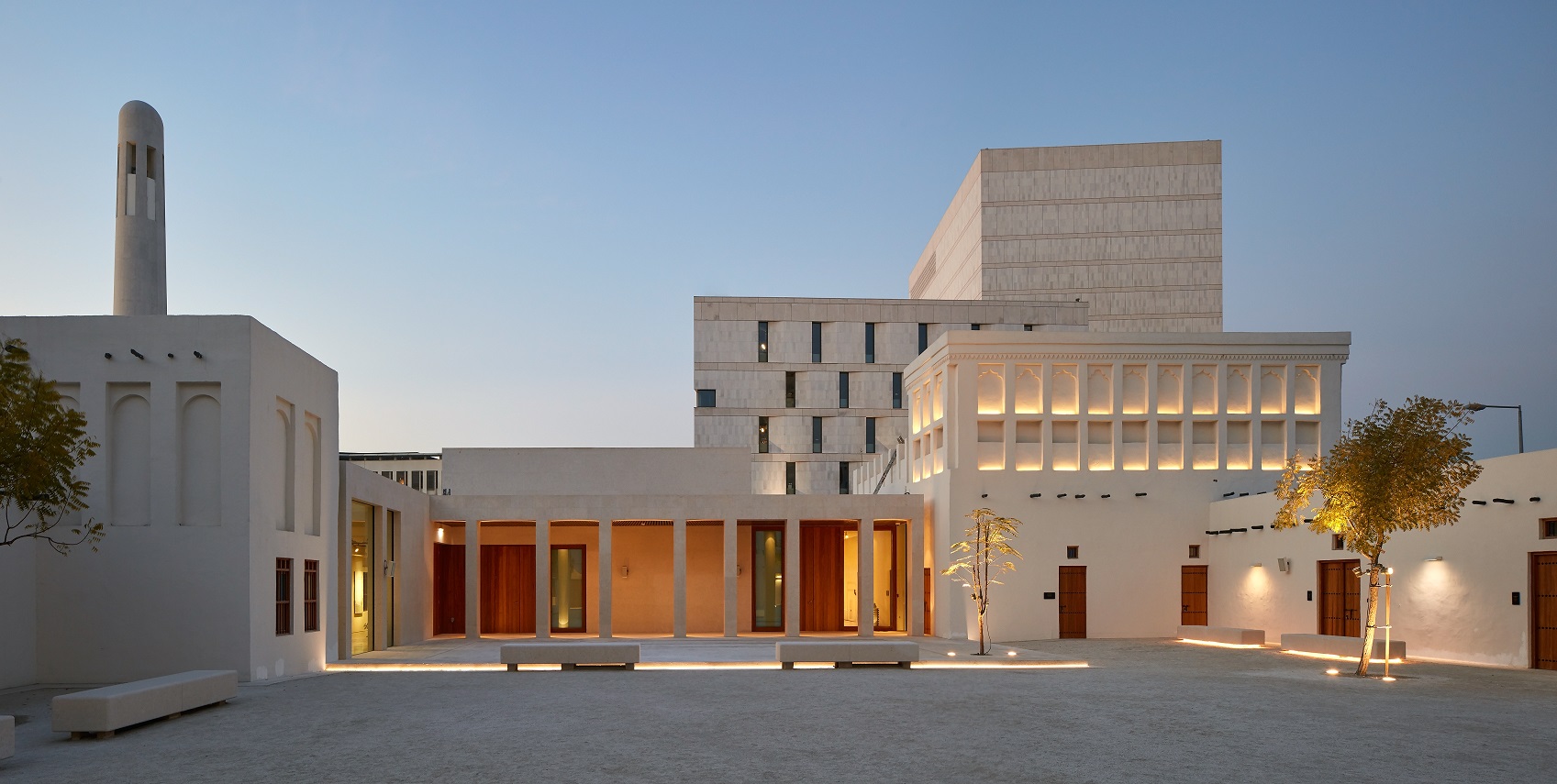World Cup 2022: Five hidden gems to visit in Qatar

With the 2022 World Cup in full swing and fans from around the world flooding into the country, it is Qatar's stadiums, green water beaches and cultural hangouts that are getting the attention.
Between waiting for games, the 1.2 million football fans in the country can visit attractions, such as the Museum of Islamic Art, the Katara cultural village and the cafes and restaurants of Souq Waqif, all easily accessible from central Doha.
But for the more adventurous, Qatar has a number of sites for those looking for touristic easter eggs, from works of art by renowned artists to unassuming museums and abandoned villages.
Middle East Eye looks at five lesser known places to visit in Qatar:
1. Film City
Stay informed with MEE's newsletters
Sign up to get the latest alerts, insights and analysis, starting with Turkey Unpacked
Also referred to as the ghost town of Qatar, this abandoned artificial village was originally built as a film set.
Hidden away some 80km from Doha, the buildings of Film City mimic ancient Bedouin settlements and with the exception of a few palm trees, the area is pretty much surrounded by barren desert.
The village was built in the middle of Zekreet Peninsula, also known as the Abrouq Peninsula, in western Qatar.
For amateur geologists, the area offers vast landscapes largely untouched by human settlement, containing salt flats and plateau rocks.
Accessible only by an off-road vehicle, explorers should keep their eyes open for wild oryx and ostriches passing by.
At the film set itself, visitors are free to have a go at producing their own films, as the deserted buildings and sand-filled empty streets provide the perfect backdrop for filmmakers.
The 2012 Arabic series called Eyaal Al Theeb or Sons of the Wolf was filmed at the site.
2. The Miraculous Journey statues
Fourteen giant bronze sculptures stand in a line inside Doha's Education City, a large compound housing several American, British and French universities and learning institutes.
The sculptures are by British artist Damien Hirst and stand in front of the Sidra Medical and Research Center, a specialist hospital for women and children.
What at first glance could be mistaken for a series of alien figures soon turns into a representation of the stages of gestation.
Expecting controversy, Hirst had told local news outlet Doha News that the artwork was the first sculpture in the Middle East portraying a naked human body.
Despite the fierce debate surrounding the sculpture and its nudity, Sheikha Al-Mayassa Hamad bint Khalifa Al Thani, who commissioned the piece and is the chairperson for Qatar Museums, told the New York Times that it was meaningful art: "There is a verse in the Quran about the miracle of birth. It is not against our culture or our religion."
Visitors are likely to spot the statues when attending matches at the Education City stadium, one of eight venues hosting World Cup matches.
3. East-West/West-East sculpture
Another dramatic piece of art work is this mysterious installation in the middle of the desert created by American artist Richard Serra.
Named East-West/West-East, the work features four gigantic steel panels, over 14 metres in height, spread across a kilometre in the Brouq Nature Reserve, west of Doha.
Interpretations of the piece are varied but one common one is that it represents the coming together of different cultures.
Getting to the installation is half of the fun, as there are no maps, signs or roads to get there, just GPS coordinates to help explorers find it.
Many of those who visit the site say they experience a sense of tranquillity because of the sheer size of the panels and the fact that it is surrounded by such a vast empty desert landscape.
Some also enjoy the different tinges of colour that are visible on the panels up close.
Serra is said to have specifically chosen German steel for its rusting properties that take on a burnt brown shade as the sun beats down on the metal panels.
This installation is said to be rusting at a quicker pace than Serra's other bodies of work, due to the Qatari weather. Visitors are advised to not touch the art when visiting in summer, as the heated steal could cause burns.
Serra is also the man behind another metal artwork along Doha's corniche. Seven, made of seven steel panels, is said to represent the importance of the number seven in Islam.
Muslims circle the Kaaba seven times during the pilgrimages in Mecca and also believe that there are seven levels of heaven.
4. Al Shahaniya camel racetrack
Camel ownership is considered a sign of one's wealth in many parts of the Gulf and the animals have been closely associated with Bedouin culture for thousands of years.
They are also used for recreational purposes, including for camel races. Professional racing began in the country in 1972, and Al Shahaniya was the main track where such events would take place.
About 60km west of Doha, the racetrack hosts many domestic and international tournaments between October and February, each event often lasting over an hour.
While child jockeys were once common in the country, in 2005 the practice was banned and races were conducted with lighter robot jockeys on the backs of camels.
A virtual camel city can be found around the racetrack, where guests visit the camels' stables. On days where there are no events, one can get closer to the camels and learn more about them.
Those wanting to learn more about the traditional sport can stop by the location even when no races are taking place.
5. Bin Jelmood House
Part of the Msheireb Museums located in Msheireb, Downtown Doha, the Bin Jelmood House raises awareness of Qatar's history including its part in the slave trade.
The building for the museum was once a house for manual labourers, whose treatment has long been criticised by human rights activists.
While its subject matter is bleak, the exhibition allows visitors to better understand the slave trade and the horrific mistreatment that people endured historically.
The museum also contains stories of servants, pearl divers and labourers in the country, going back to before the discovery of natural gas.
Part of the exhibition is designed to raise awareness about the exploitation of people and also show how Islam ordains the humane and just treatment of workers.
The museum also addresses the kafala or sponsorship system used for expats, which can still be found in most Gulf countries.
Under the system, a non-citizen's residency is tied to their employer. While used for everything from highly paid corporate jobs to manual labour, the kafala system has in the past been exploited by employers to the disadvantage of workers.
This article is available in French on Middle East Eye French edition.
Middle East Eye delivers independent and unrivalled coverage and analysis of the Middle East, North Africa and beyond. To learn more about republishing this content and the associated fees, please fill out this form. More about MEE can be found here.


